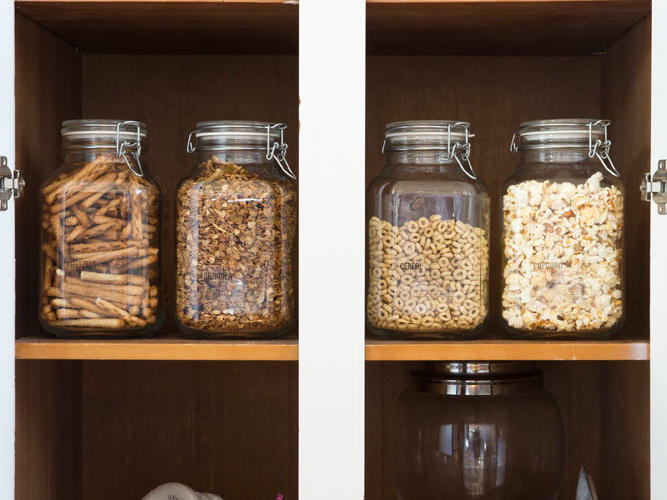
How to Refresh Your Pantry for Spring
Start spring cooking with a clean slate.

We only recommend things we love. If you buy something through our site, we might earn a commission.
Go Through Your Spice Collection
According to Erica Perez and John Beaver, owners of East Bay’s spice emporium Oaktown Spice Shop, most spices don’t physically go bad but they do lose their potency, which affects how fresh your food tastes. However, the shop owners do have some best practices when it comes to refreshing your spice collection. Ground spices like turmeric, cinnamon, and paprika should be refreshed every year. Leafy, green, herby spices like parsley, oregano, and thyme should also be refreshed every year. Whole spices like cinnamon sticks, peppercorn, and cumin have a longer shelf life of two years. “The way you store herbs also has a big impact on how long they last in your pantry,” says Beaver. “If [spices] are in an airtight glass jar, they will last longer than if they’re in a plastic bag or plastic jar—also consider whether you store spices in a cool, dark space versus near a sunny window or stove.”
Make Sure Your Olive Oil Is Fresh
The first things to check on your oil is the harvest and “best by” date. Vincent Ricchiuti, director of operations at California-based Enzo Olive Oil, says, “I tend to tell people to consume unopened olive oil within the first 18 to 20 months after its harvest date.” But once you open a bottle, the shelf life starts to go down rapidly. Ricchiuti recommends consuming olive oil within six months of its opening. “Once olive oil is opened, you start to introduce oxygen to the oil and it will naturally start to go bad quickly.” If you’re unsure about the state of your olive oil, give it a whiff with your nose. Fresh olive oil should smell of “very green flavors,” according to Ricchiuti. Think green banana, fresh grass, green almonds, and tomato leaves. If your oil is expired or rancid, it would smell musty, medicinal, or even like dirty laundry. Time to throw it out and buy a new bottle.
